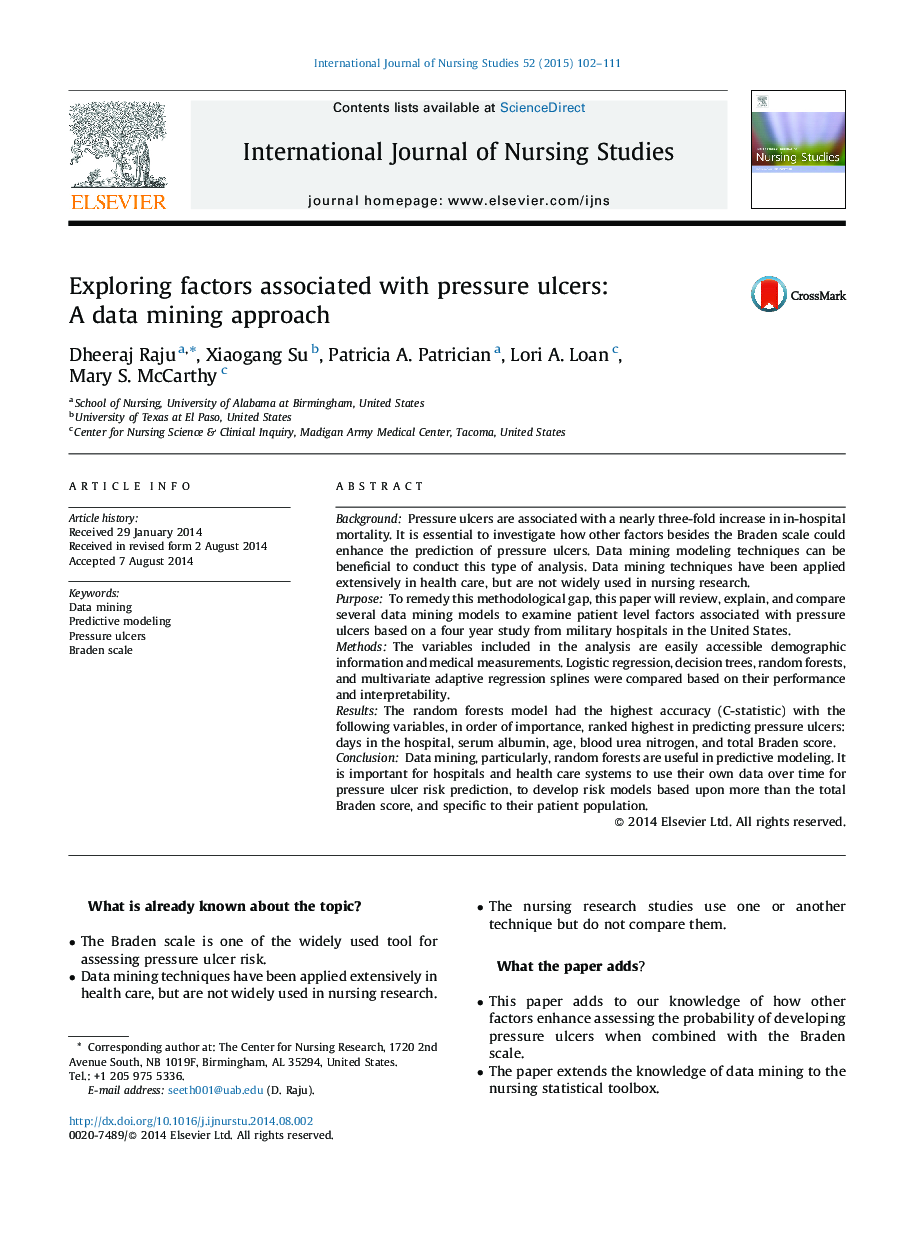| Article ID | Journal | Published Year | Pages | File Type |
|---|---|---|---|---|
| 1076026 | International Journal of Nursing Studies | 2015 | 10 Pages |
BackgroundPressure ulcers are associated with a nearly three-fold increase in in-hospital mortality. It is essential to investigate how other factors besides the Braden scale could enhance the prediction of pressure ulcers. Data mining modeling techniques can be beneficial to conduct this type of analysis. Data mining techniques have been applied extensively in health care, but are not widely used in nursing research.PurposeTo remedy this methodological gap, this paper will review, explain, and compare several data mining models to examine patient level factors associated with pressure ulcers based on a four year study from military hospitals in the United States.MethodsThe variables included in the analysis are easily accessible demographic information and medical measurements. Logistic regression, decision trees, random forests, and multivariate adaptive regression splines were compared based on their performance and interpretability.ResultsThe random forests model had the highest accuracy (C-statistic) with the following variables, in order of importance, ranked highest in predicting pressure ulcers: days in the hospital, serum albumin, age, blood urea nitrogen, and total Braden score.ConclusionData mining, particularly, random forests are useful in predictive modeling. It is important for hospitals and health care systems to use their own data over time for pressure ulcer risk prediction, to develop risk models based upon more than the total Braden score, and specific to their patient population.
